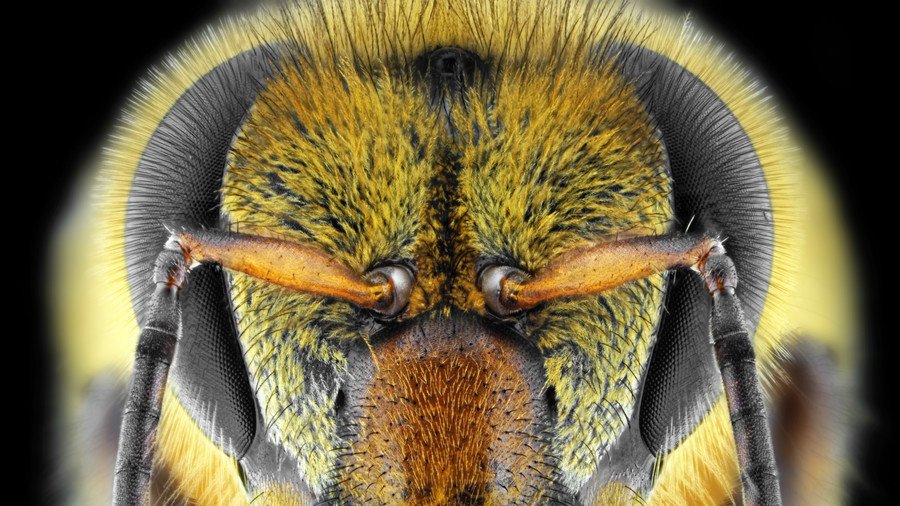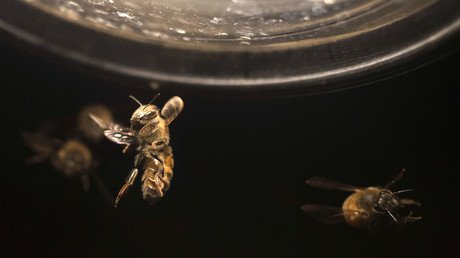Bad to the brain: Scientists learn what makes killer bees so aggressive

A group of martyr scientists who wanted to better understand the brain of killer bees were forced to take their lives into their hands to gather the evidence, and all in the name of research.
The study, published in the Journal of Proteome Research, aimed to analyze the brains of Africanized Honeybees, aka ‘killer bees,’ to learn how it affects their infamous aggressiveness.
In order to collect the little murderers without becoming one of their unsuspecting victims, the researchers dangled thick leather balls near their hives (seriously) in an effort to lure them to swarm and attack the strange invading spheres.
Evil? Yes. Dumb? Definitely. Like taking venom from a baby, as the bees attacked the leather balls, their stingers became stuck and all the researchers had to do was mercilessly pluck them out and pop them into liquid nitrogen.
What happened to the peaceful bees who kept a distance and watched the horror from afar you ask? They were also collected, frozen, and placed into a separate category. You know what they say, live the sword…
Back in the lab and out of danger, the scientists compared the brain proteins of the aggressive attackers and shrinking violets, and noticed a clear difference.
Both groups of bees were found to possess a set of neuroproteins: one of which was already known to affect bee learning, memory, and development, the other appeared to influence sensory processing.
READ MORE: Arizona: Where even the bees are Islamophobic
In the killer bees, these neuropeptides had been cut into short proteins and were found in different clusters of brain tissue. To verify that it was in fact this change that altered their behavior from the clam bees, scientists injected a selection of non-aggressive bees in their sleep and noticed a clear difference in their behavior when they woke up.
The team says more work is needed to determine exactly how the size and distribution of these neuropeptides causes more aggressive behavior. Finding out more about the effects of these proteins on bees could also shed light on the development of the bee’s nervous system as a whole, as well as that of all insects.















